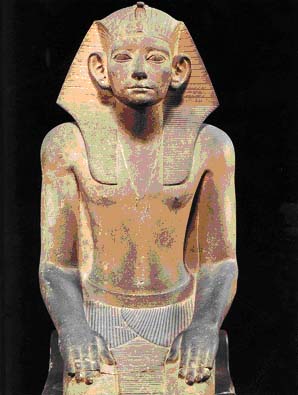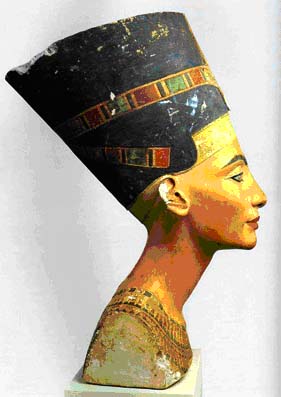|

|
Amenemhat III
|
Amenemhat III (1859-1814 B.C.), the pharaoh of the 12th Dynasty, was one of the most active rulers of the Middle Kingdom period in ancient Egyptian history. During his 48-year reign, a number of unique temples and irrigation works were constructed.
This statue of Amenemhat III is the only fully preserved royal stone sculpture in the hermitage, a superb example of Ancient Egyptian portrait art. In the Middle Kingdom, the stress on the sense of dignity and might of the figures portrayed had begun to weaken; the sculptors started to pay much more attention to the depiction of the characters' emotional status.
|

|
The Bust of Nefertiti
|
Nefertiti was the Great Royal Wife of the Egyptian Pharaoh Amenhotep IV. The skills used in molding the Bust of Nefertiti were so excellent that it is hard to believe the statue was made by a slave artist 3,500 years ago.
Amenhotep is known in history as a bold revolutionist. Throughout his life he tried to weaken the religious control over his kingship, and strived to consolidate the worldly power of the pharaoh. His revolution had a great impact on art. It not only made art more attainable by the common people, but also injected a sense of vitality into it. Since his reign, Egyptian art started to get rid of the rigid formulas, and took a more vivid and realistic path. The bust of Nefertiti is one of the classics of this period.
This bust depicts her with full lips enhanced by a bold red color. Although the crystal inlay is missing from her left eye, both eyelids and brows are outlined in black. Her graceful elongated neck balances the tall, flat-top crown which adorns her sleek head. The vibrant colors of her necklace and crown contrast the yellow-brown of her smooth skin. While everything is sculpted to perfection, the one flaw of the piece is a broken left ear. Because this remarkable sculpture is still in existence, it is no wonder why Nefertiti remains known as "The Most Beautiful Woman in the World."
